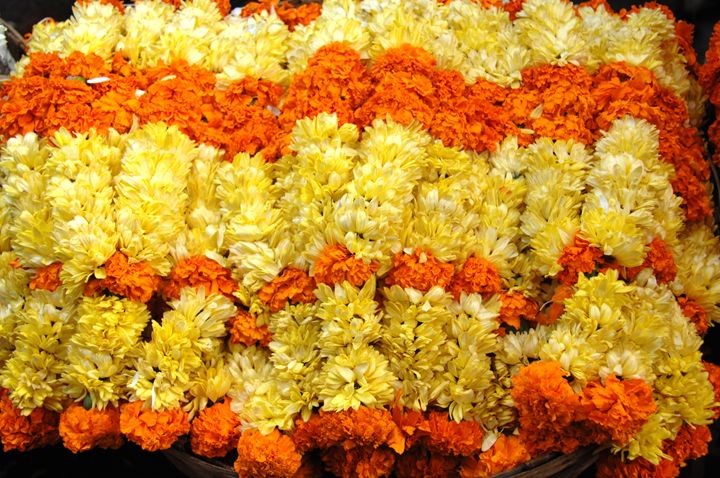
In Goa, flowers do more than decorate—they communicate devotion. From village temples to home shrines, flower garlands play a sacred role in religious rituals, especially during festivals. Their making is not merely a task, but a deeply spiritual and artistic tradition passed down through generations.
A Daily Offering, Elevated During Festivals
While Goans offer flowers to deities throughout the year, festive occasions like Ganesh Chaturthi, Dussehra, and Diwali elevate this act to an art form. During these celebrations, garlands become more elaborate, vibrant, and meaningful. Devotees believe that every garland made with love and intention pleases the deity and attracts blessings.
Choosing the Right Flowers
Garland makers select specific flowers for their fragrance, color, and significance. Jasmine (mogra), with its sweet scent, symbolizes purity. Marigolds represent auspiciousness and are often used in bright orange and yellow. Roses, kaner (oleander), and lotus are also popular choices, each carrying its own spiritual message.
The Process: Skill and Devotion Intertwined
Women and elders in the household often take charge of garland-making. They pluck fresh flowers in the morning, sit together with needles and thread, and begin the rhythmic process. Many chant mantras or bhajans as they work, infusing the garland with devotion.
Patterns vary—from simple linear styles to elaborate braids and loops. Some garlands include leaves like tulsi or betel, enhancing their aroma and significance.
Garlands as a Form of Worship
In Goa’s Hindu homes and temples, deities like Shri Ganapati, Devi, and Krishna are adorned with fresh garlands multiple times during festivals. These garlands are often changed daily, reinforcing the belief that gods and goddesses deserve the freshest and best offerings.
At community events, temple workers and volunteers craft dozens of garlands for idols, procession floats, and temple entrances. In some villages, flower vendors specialize in garland-making, supplying families and temples during peak festival seasons.
Passing on the Tradition
Though fewer people now make garlands at home, some families continue to teach children the techniques. This quiet, intricate activity becomes a time of bonding, storytelling, and spiritual growth. Elders share the meanings behind each flower, and children learn not just a craft, but a cultural legacy.
Conclusion
The art of making flower garlands in Goa is more than decoration—it’s an expression of bhakti (devotion), creativity, and cultural pride. With each petal strung and each knot tied, Goans keep a sacred tradition alive, ensuring their festivals remain fragrant, colorful, and spiritually vibrant.


